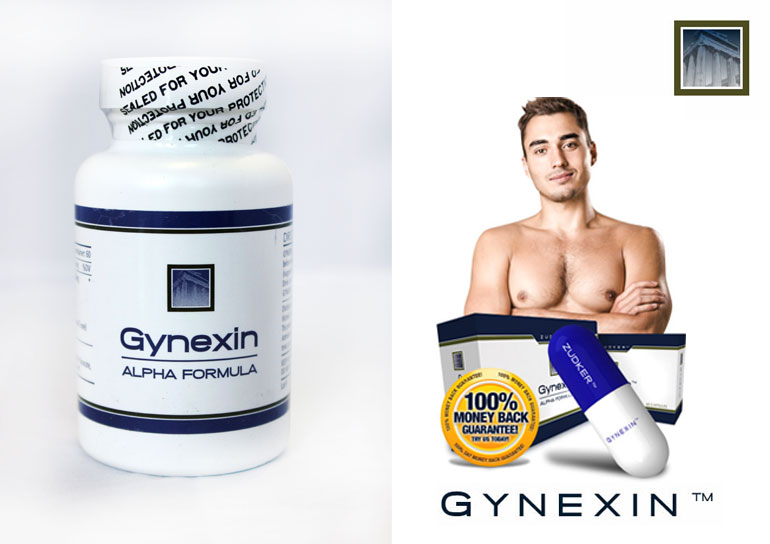Last Updated on
Gynecomastia – male breast disease, which is manifested by an increase in their size due to hypertrophy of the glands or fat tissue. Mammary glands (one or two) are sealed, a feeling of heaviness, pain during palpation. The disease can have an independent regression. If conservative therapy is ineffective, surgical treatment is an indicator, since a long period of gynecomastia involves the risk of developing breast cancer.
Dimensions mammary glands in the disease can be as high as 2 to 10 centimeters (usually about 4) in diameter. Gynecomastia occurs in 50 – 70% of healthy adolescents aged 13 – 14 years, about 40% of young men, 60% – 70% of men older. Gynecomastia causes physical discomfort and psychological difficulties in men.
Causes
![Gynexin[1]](https://theheadshotguy.info/wp-content/uploads/2017/04/Gynexin1-300x212.jpg) Development of male gynecomastia can cause the following factors:
Development of male gynecomastia can cause the following factors:
- Report ratio of estrogen and testosterone in the male organism. This state is observed during the occurrence of hormonally active adrenal tumors, pituitary, stomach, testis, lung, pancreas, and age at primary deficiency functions of sexual glands (hypogonadism), adenoma of prostate, testicular inflammation, Addison’s disease.
- Hyperprolactinemia – increased prolactin secretion due to pituitary tumors, hypothyroidism.
- Diseases accompanied by metabolic disorders – diabetes, Graves’ disease, obesity, pulmonary tuberculosis.
- Not endocrine diseases – intoxication, liver cirrhosis, renal or heart failure, HIV infection, and trauma herpetic lesion thorax, power normalization after depletion period.
- Intake of drugs that affect receptors of breast tissue, increase productivity prolactin or estrogen, have a toxic effect on the testicles.
- Use of narcotics (heroin, marijuana and the like), and alcohol.
Symptoms
When gynecomastia breasts vary in diameter from 2 to 15 centimeters and a weight to reach 160 g. Increased nipple becomes sharply pigmented areola and extends it up to 2-3 cm in diameter. Occasionally there are milk-like discharge from the nipple. Usually, swollen glands does not cause pain, but might feel pressure, nipple sensitivity may increase, causing discomfort when in contact with clothing.
When gynecomastia is increased likelihood of a unilateral lesion of the breast tumor.
Gynecomastia, hyperprolactinemia provoked, takes place accompanied by oligospermia, impotence, and the symptoms of nervous system.
Identified three stages of development of gynecomastia:
- growing (proliferating), which is caused by the initial changes in the first four months of the disease, when there may reverse the development process in need of treatment;
- intermediate – when ripe glandular tissue (from 4 months to a year from the beginning of the disease);
- fibrous, marked by the appearance in the glands of fat and connective tissue (the pathological process in this case is irreversible).
Treatment
To suppress the high concentrations of estrogens at gynaecomastia in adolescents are assigned hormonal preparations: testolactone, tamoxifen, danazol, clomiphene, dihydrotestosterone.
When the medication does not give a positive result in a reduction of the size of the breast, is called to the aid of plastic surgery. Operative intervention is recommended for gynecomastia in such cases where no effect is obtained from conservative therapy or clearly understood that the treatment medication will not give the desired effect (when tumor lesions). Surgical treatment of the disease process is to remove breast tissue and restoration of their natural circuits.
There are the following types of gynecomastia operations:
- subcutaneous mastectomy, in which is stored areolas of paraareolyarnogo section;
- subcutaneous mastectomy from paraareolyarnogo incision and liposuction;
- Endoscopic mastectomy (when an increase in mammary minor).
Such operations are well tolerated by patients, this surgery does not require a long hospitalization (usually limited to 2 days) and rehabilitation. After mastectomy during the first 2-3 weeks will certainly need to wear elastic underwear slimming in order to properly build muscle contour and to decreased skin. After the operation is ready to work, and a month later – in sports.

MOST COMMENTED
Bodybuilders
Is Bradley Martyn on Steroids, or Is He Natural?
Celebrities
Did Christian Bale Take Steroids For Batman Begins?
Bodybuilders
Testosterone Cypionate Dosage
Bodybuilders
Leg Workout for Muscle Definition: How to Get, Diet & Exercises
Bodybuilders / Informative
Diuretics for Bodybuilding: What is it, Types & Side Effects
Trainer Advices
How to Improve Your Deadlift?
Creatine
Creatine in bodybuilding: increased strength and weight gain